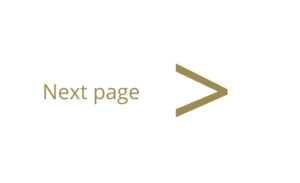
Academic or Agency? Analyzing Satoshi’s Professional Background
Chapter 9
While the Bitcoin whitepaper demonstrates sophisticated understanding of cryptography and security principles, its approach to these topics provides compelling evidence about its author’s background. The document shows clear markers of academic training rather than security agency experience.
9.1. Technical versus Operational Security
The Bitcoin whitepaper’s approach to security provides perhaps the strongest evidence of its author’s background. While demonstrating sophisticated understanding of cryptographic principles, the document approaches security purely from a mathematical and computer science perspective. Most tellingly, it completely lacks consideration of operational security and human factors—elements that security agency professionals consider fundamental to any security analysis.
The author’s treatment of potential attacks particularly reveals an academic mindset. Rather than employing the nuanced threat modeling typical of security professionals, the paper relies on simple binary distinctions between “attackers” and “honest nodes.” This theoretical framework stands in sharp contrast to the sophisticated terminology that characterizes security agency documents. We find no references to threat vectors, operational security considerations, compromise indicators, or adversary capabilities analysis—all standard elements in professional security documentation.
The document’s approach to risk assessment further reinforces its academic origins. While offering rigorous mathematical probability analysis, it lacks the comprehensive threat assessment that security agencies demand. A security professional would typically address human factors, consider social engineering vulnerabilities, assess operational vulnerabilities, and employ multi-layered threat modeling. The whitepaper’s focus remains purely theoretical, suggesting an author steeped in academic rather than operational security traditions.
9.2. Information Handling and Citation Style
The way information is presented throughout the document strongly contradicts security agency practices. Where agency professionals carefully compartmentalize information and operate on a “need to know” basis, this author freely shares complete technical details and methodologies. This open approach to technical information strongly suggests someone from an academic environment where sharing knowledge is fundamental to the culture.
The document’s citation style provides additional evidence of academic background. The references follow standard academic conventions, citing public research papers and revealing clear connections to academic networks. This straightforward approach to citation contrasts sharply with agency documentation, which typically involves careful source protection and redaction.
9.3. Problem-Solving Methodology
The author’s approach to problem-solving reveals a researcher’s mindset rather than a security operative’s perspective. We see a systematic methodology focused on theoretical foundations, with pure computer science and cryptography perspectives dominating the analysis. The emphasis falls heavily on mathematical proofs, with solutions developed through clear step-by-step logical progression.
Notably absent are the elements that characterize agency problem-solving: operational risk assessment, implementation security considerations, real-world threat scenarios, and defensive posture analysis. Instead, we find the careful theoretical development typical of academic research.
9.4. Professional Background Profile
The evidence overwhelmingly supports an academic rather than security agency background. The author shows advanced computer science or mathematics training, strong theoretical cryptography knowledge, and a pure research-oriented approach. Their writing follows academic conventions precisely while lacking every major indicator of agency experience.
The absence of security agency patterns proves particularly telling. We see no operational security mindset, no agency terminology, no threat assessment patterns, and none of the information protection practices that become second nature to agency professionals. Instead, the author demonstrates pure theoretical and mathematical approaches to security, academic writing style and citation patterns, research-oriented problem-solving, and open sharing of technical details.
This complete analysis helps narrow the field of possible authors to those with strong academic backgrounds in computer science or mathematics, particularly in cryptography research. The writing suggests someone thoroughly embedded in academic cryptography research, with deep computer science knowledge and a theoretical security background. The complete absence of security agency patterns, combined with the strong academic indicators, points to someone whose primary experience comes from research institutions rather than government or intelligence organizations.
Most significantly, this also suggests someone whose primary concern was technical elegance and mathematical soundness rather than operational security or real-world threat mitigation. This aligns perfectly with Bitcoin’s design, which emphasizes cryptographic integrity over operational security considerations—exactly what we would expect from an academic researcher rather than a security agency professional.

Founder and Managing Partner of Skarbiec Law Firm, recognized by Dziennik Gazeta Prawna as one of the best tax advisory firms in Poland (2023, 2024). Legal advisor with 19 years of experience, serving Forbes-listed entrepreneurs and innovative start-ups. One of the most frequently quoted experts on commercial and tax law in the Polish media, regularly publishing in Rzeczpospolita, Gazeta Wyborcza, and Dziennik Gazeta Prawna. Author of the publication “AI Decoding Satoshi Nakamoto. Artificial Intelligence on the Trail of Bitcoin’s Creator” and co-author of the award-winning book “Bezpieczeństwo współczesnej firmy” (Security of a Modern Company). LinkedIn profile: 18 500 followers, 4 million views per year. Awards: 4-time winner of the European Medal, Golden Statuette of the Polish Business Leader, title of “International Tax Planning Law Firm of the Year in Poland.” He specializes in strategic legal consulting, tax planning, and crisis management for business.







